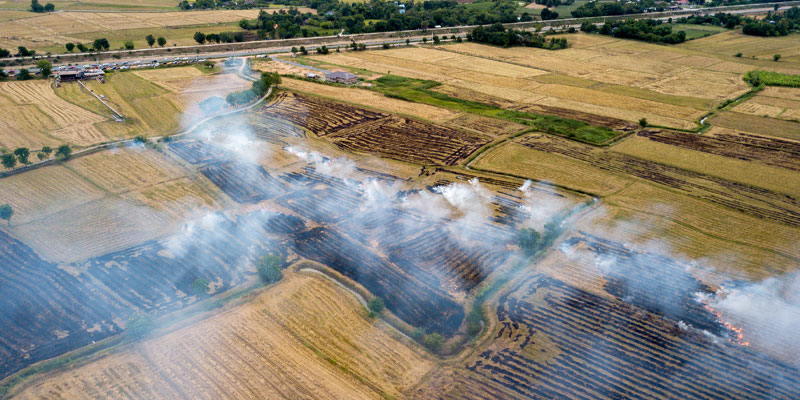The issue
The United Nations Economic Commission for Europe (UNECE) Long Range Transboundary Air Pollution (LRTAP) Convention oversees the assessment of scientific evidence that forms the basis of their approach to identifying air pollution emission control options across Europe.
This is detailed in their multi-pollutant, multi-effect Gothenburg Protocol on acidification, eutrophication and ground level ozone.
This protocol has been the driving force for the establishment of European legislation on air quality policy as well as global, European and national air quality targets.
Our research has been instrumental in revising critical levels for ozone which have been used in the updated Gothenburg Protocol.
The research
Previous research at York led to the development and application of both concentration-based and novel flux-based risk assessment methods to establish critical levels of ozone across Europe.
This method applied knowledge of leaf-level plant ecophysiological processes to estimate relative potential ozone uptake or stomatal ozone flux (ozone uptake via the leaf pores). It showed that the geographical distribution of relative risk differed substantially when using flux versus concentration-based methods. It also demonstrated that flux was a better predictor of the location and magnitude of risk for ozone damage.
This flux-based method was parameterised for important European vegetation types, forming the core of what was later to become known as the DO3SE (Deposition of Ozone and Stomatal Exchange) model.
The outcome
Our DO3SE model is the single model upon which the LRTAP Convention bases their flux modelling methods.
The model was applied to derive flux-response relationships for a number of crop, forest and semi-natural grassland species. This led to tighter controls on air pollutant precursor emissions of ozone across Europe, benefitting crop and forest productivity and grassland species composition.
These flux-response relationships have been used to establish new critical levels and continue to provide tools that ensure ecosystem protection, improving food supply, carbon sequestration and biodiversity.
The DO3SE model is also available as user interface software and is recommended by the UNECE LRTAP Convention as the method by which member states should calculate risk by ozone to vegetation.

